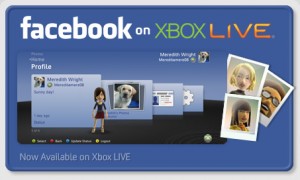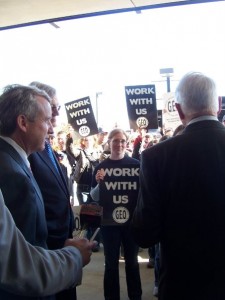Does the Living Room Computer Have to do Everything?
Monday, November 23rd, 2009As mentioned in my previous post “My Game System is My New Cable Box,” the newest system update for the XBox 360 now includes a number of social networking and Internet applications, including Facebook, twitter, last.fm, and Zune (Microsoft’s attempt to compete with the iTunes store). For me, the integration of these services feels like a kind of weird collision of different neighborhoods and cultures.
The neighborhoods metaphor is apt, in part because of the debate earlier this year about the socioeconomic and race connotations of different social networking sites. Danah Boyd notably described a “white flight” from MySpace to Facebook (here’s a nice overview article of her point). Facebook, she argues, has been portrayed as a higher-class, safer place by media coverage.
Eszter Hargittai also published a revealing demographic analysis comparing SNSs two years ago in the Journal of Computer Mediated Communication, titled “Whose Space?“. She found a number of interesting differentiations among these sites: “different populations select into the use of different services.” For instance, Asian-Americans are less likely to use MySpace.
So our Internet applications are like demographically distinct neighborhoods of a city. Of course we know that all kinds of things are differentiated demographically (see: Stuff White People Like). But the XBox360 merge combines the XBox’s own social networking system (based on Gamertags) with others systems like Twitter and Facebook and this is a different kind of mixing. Yes these sites can reach different audiences but that they are used by the same audiences for different purposes in different contexts with different interfaces. It’s not just that different people live in different neighborhoods (MySpace vs. Facebook demographics), but that when I personally visit different neighborhoods I expect them to look different (many people use multiple SNSs).
Everything is suddenly all mixed into the XBox interface. Having some of this stuff on my TV is actually pretty weird. Adding Zune to the XBox makes a lot of sense — that’s a store to sell a/v products and I want to buy TV shows to watch on my TV. But the other services are jarring — they echo Don Norman’s point from ten years ago in The Invisible Computer that single-purpose devices are often preferable to multi-purpose ones (here’s an old interview when he makes this point).
No one seems to be listening to him. The interface is so much more difficult to get right on a multipurpose device. Rather than a generic menu system that must fit everything, with a specialized device you can have a streamlined interface that helps you do what you are trying to do. It makes so much sense to just keep each single-purpose device in the place where you want to do that task.
For instance instead of a smartphone to do everything, you might want a dedicated e-mail device like the Peek (pictured above). A friend of mine keeps both a Palm TX for the calendaring and an iPhone for mobile web surfing (and occastionally, telephoning). I think this kind of thing is actually quite widespread. The specialized devices are often so much better at a particular thing while a generalized device is bad at everything (or mediocre at everything).
So now the XBox is kind of a mishmash of Twitter, Facebook, Netflix, gamertags, etc. Maybe it will grow on me but I doubt it. For instance, Zune and Netflix now have to share the awkward XBox menuing system and are only differentiated by the fact that their backgrounds are different colors (Netflix is red, Zune is black). To continue the neighborhoods metaphor, in their wisdom the XBox Live designers have taken all of the neighborhoods you like to visit in Manhattan and relocated their shops to a bland suburban street grid that stretches to infinity in every direction.
In my earlier post I praised the idea of the game console as the new basic entertainment computer in the living room that could handle a variety of video and gaming functions. Let’s me temper my enthusiasm. A game console is a good idea for things a gaming console connected to a TV can be good at! If we try to cram everything else in there too I don’t think the results will be pretty.








